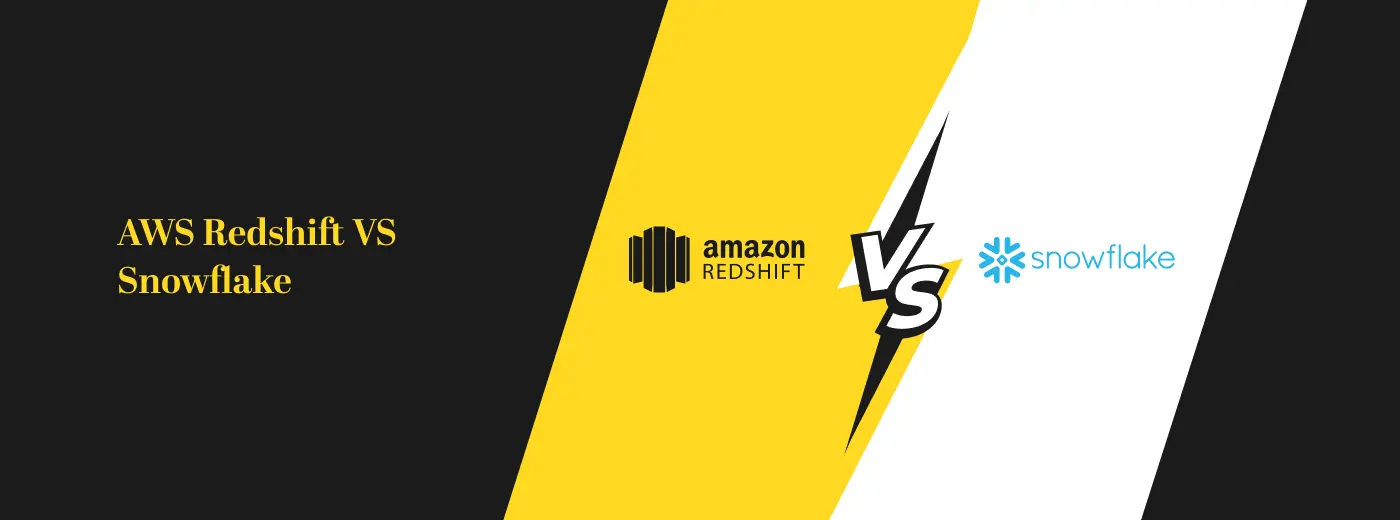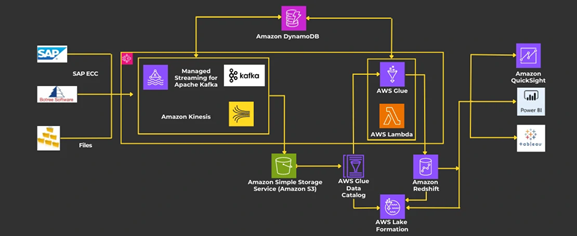
Sign up to receive latest insights & updates in technology, AI & data analytics, data science, & innovations from Polestar Analytics.
Editor’s note: Embarking on the journey of choosing the ideal data warehousing solution can be both thrilling and daunting. As you step into the arena of AWS Redshift vs. Snowflake, you're about to witness a match that could shape the future of your data strategy. No need for a preamble; we're diving straight into the heart of this rivalry, providing you with the insights and knowledge you need to make the best choice for your data needs. Prepare for an enlightening exploration that will empower your business for years to come.
If you've arrived here seeking a comparison between the two data warehousing solutions, Redshift vs Snowflake, it's likely that you already have a level of familiarity with these platforms and are seeking guidance in selecting the most suitable one for your business needs.
Therefore, we won't spend time providing exhaustive explanations of each platform. Instead, we will provide a concise overview of their key features and promptly delve into an in-depth analysis, highlighting the pros and cons of both data warehousing solutions.

Snowflake stands as a cloud-native data platform, delivered as a Software as a Service (SaaS), and offering several key features, including:
1. Secure Data Sharing
2. Unlimited Scalability
3. Seamless Multi-Cloud Experience
This platform operates using a virtual warehouse framework that harnesses cloud-computed resources from prominent providers like AWS, Azure, or GCP. The ability to select high-performance cloud platforms enables real-time auto-scaling for organizations with the objectives of:
Compared to conventional Data Warehouse (DWH) solutions, Snowflake adopts an unconventional approach to data warehousing by decoupling computing from storage. Consequently, data can be stored centrally while compute instances are sized, scaled, and managed independently.
Snowflake assumes responsibility for all aspects of data administration, delivering a simplified, more flexible warehousing solution equipped with various enterprise-grade capabilities.
The Snowflake analytics platform capitalizes on a custom SQL query engine and a three-layer architecture to facilitate real-time analysis of streaming big data. Its adaptable architecture empowers users to develop their own analytical applications without the necessity of acquiring proficiency in new programming languages.
Benefits of Snowflake:
When to use Snowflake:
Snowflake is the ideal data warehouse solution when:

AWS Redshift is a cloud-based data warehousing solution that utilizes compute nodes to facilitate large-scale data analysis and storage. It employs columnar databases to connect business intelligence tools with SQL-based query engines, achieving swift query results on extensive datasets through PostgreSQL and Massively Parallel Processing (MPP) on dense storage nodes.
Redshift provides several cluster management options for efficiency, including:
Redshift is a fully managed data warehousing platform that enables organizations to query and integrate petabytes of data with optimized cost-efficiency. The Advanced Query Accelerator (AQUA) introduces a caching mechanism that enhances query performance by up to 10x, empowering businesses to extract valuable insights from every data point within their applications and systems.
Benefits of AWS Redshift:
When to use Redshift:
AWS Redshift is the ideal data warehousing solution when:
Empower your systems for Seamless Data Management and Analytics through Strategic AWS Collaboration
Regarding top-tier data warehouse cloud solutions, both Snowflake and Amazon Redshift stand out as high-performing options that have significantly transformed the volume, quantity, and speed of business intelligence insights. Choosing between them is less a matter of establishing superiority between the products and more about discerning which solution aligns best with your data strategy.
To bundle or not? Redshift combines compute and storage for instant scalability, while Snowflake separates them, offering flexibility for scaling as needed.
JSON: Snowflake provides robust JSON storage and query features, while Redshift splits JSON into strings upon loading, making it less convenient.
Security: Redshift offers customizable encryption, while Snowflake integrates security and compliance in all tiers, ensuring security from integration.
Data tasks: Redshift requires manual maintenance, while Snowflake automates many tasks, saving time for issue resolution.
Evaluate these features based on your data strategy to determine whether Redshift vs Snowflake is more advantageous for your organization's optimization needs.
| Feature | Snowflake | AWS Redshift |
|---|---|---|
| Architecture | Hybrid architecture that combines a traditional row-based database and a column-oriented database with separation of compute and storage supporting transactional and analytical workloads with MPP architecture. | Massively Parallel Processing (MPP) architecture which distributes data and queries across multiple nodes in a cluster with columnar storage. No separation of compute and storage |
| Performance | Snowflake slightly outperforms BigQuery and Redshift in benchmarks due to its efficient micro-partition storage. Its decoupled storage & compute architecture reduces resource competition, and larger warehouses can boost performance, but not always linearly. The "Search optimization service" adds index-like capabilities at an extra cost. | Redshift uses a result cache and offers more tuning options but doesn't significantly outpace competitors in compute performance benchmarks. Sort keys help but have limits. Lack of indexes and limited storage & compute decoupling make low-latency analytics on large data volumes challenging. |
| Maintenance | Automated performance tuning | Users are required to manually handle credential and permissions management |
| Security | Snowflake offers encryption and VPC/VPN network isolation, with security features and costs that depend on the chosen product edition. | Amazon Redshift provides customizable end-to-end encryption and a robust suite of security tools, including access management, cluster encryption, security groups, sign-in credentials, SSL connections, and VPC/VPN, all without incurring extra licensing or tier pricing expenses. |
| Scalability | ||
| Integration | Vendor-neutral positioning across cloud platforms. Snowflake is supported on the three major public clouds: AWS, GCP, and Azure. | Amazon Redshift seamlessly integrates with the AWS ecosystem, including third-party ETL, visualization, and machine learning tools and many more. |
| Pricing | Pay-as-you-use with automatic cluster shutdown during idle times. Complex tiered computational structure, potentially more expensive in most use cases. | Simple and transparent pricing with potential savings through commitment. Offers up to 75% savings with committed use. Amazon Redshift Monthly Cost = [Price Per Hour] x [Cluster Size] x [Hours per Month] |
| Pros | Cons |
|---|---|
| Strong performance for complex queries. | Limited decoupling of storage and compute can lead to resource contention. |
| Integration with AWS services. | Limited native support for JSON data. |
| Result caching for repetitive queries. | No built-in support for indexing. |
| Customizable encryption options. | Requires manual maintenance tasks. |
| Suitable for analytical workloads. | Not ideal for transactional systems. |
| Offers rollback to previous versions. | Charges for Redshift Spectrum based on bytes scanned. |
| Extensive third-party ecosystem. | May lack modern features and data types. |
| SQL dialect resembles PostgreSQL. | Potential issues with hanging queries in external tables. |
| Supports account-to-account data sharing. | Data integrity verification can be challenging. |
| Integration with Amazon AWS. | Primary and foreign keys are informational only; no uniqueness enforcement. |
Snowflake
| Pros | Cons |
|---|---|
| Flexible scaling with separate compute and storage. | May not be suitable for on-premises technology that doesn't integrate with the cloud. |
| Efficient handling of JSON data. | Minute-based billing with charges every second after starting a virtual warehouse. |
| Built-in security and compliance features. | Slightly higher pricing complexity. |
| Automation of maintenance tasks. | No result caching for query acceleration. |
| User-friendly and compatible with most technologies. | |
| Intuitive SQL interface with autocomplete. | |
| Easy setup and integration with cloud-based data sources. | |
| User-friendly and compatible with most technologies. | |
| Extensive third-party partner ecosystem. | |
| True SaaS model with cloud service integration. | |
| Account-to-account data sharing. | |
| Integration with Amazon AWS. |
Cloud-based data warehouses such as Snowflake and Redshift empower you to create dashboards and define key performance indicators (KPIs). However, they do not address the final analytics hurdle, known as "Data Activation." These data warehouses are primarily accessible to technical users proficient in SQL, leaving your business teams unable to tap into the valuable customer data stored within the warehouse.
Seek professional guidance from Polestar Analytics to identify the most suitable Data Lakehouse for your organization, and access expert assistance for your analytics needs.
Contact our team today for a complimentary consultation concerning your data warehousing requirements.
About Author

Marketing Consultant
Data Alchemy can give decision making the golden touch.